As we enter into the Data Technology (DT) era, enterprises are increasingly dependent on data, and data protection becomes ever essential for enterprises. Only those enterprises that take preventive measures and make sufficient technical preparations can survive IT disasters. During the Best Practices for Enterprise Databases session at The Computing Conference 2018, topics related to disaster recovery attracted much attention. Based on the information shared by the Alibaba Cloud database team in the forum, this document explains how to use the database cloud product portfolios to tailor disaster recovery solutions to the development status of enterprises.
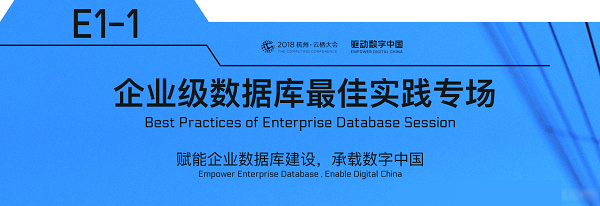
Data is an important production resource for an enterprise. When data is lost, the enterprise's customer information, technical documentation, and financial accounts may be lost, which can inhibit customer relations, transactions, and production. In general, data loss can be classified into three types:
To prevent the economic loss caused by data loss, enterprises must take disaster recovery measures to protect data. As the informatization of enterprises progresses, the importance of disaster recovery measures increases.
Disaster recovery refers to creating backups and disaster tolerance.
An enterprise-class database disaster recovery system should be selected based on business requirements and take the following factors into full consideration: RPO, RTO, costs, and scalability. The system must also meet the various requirements of database disaster recovery, including the setup of the disaster recovery environment, data synchronization, monitoring and alarming, drilling, failover, and data verification and correction.
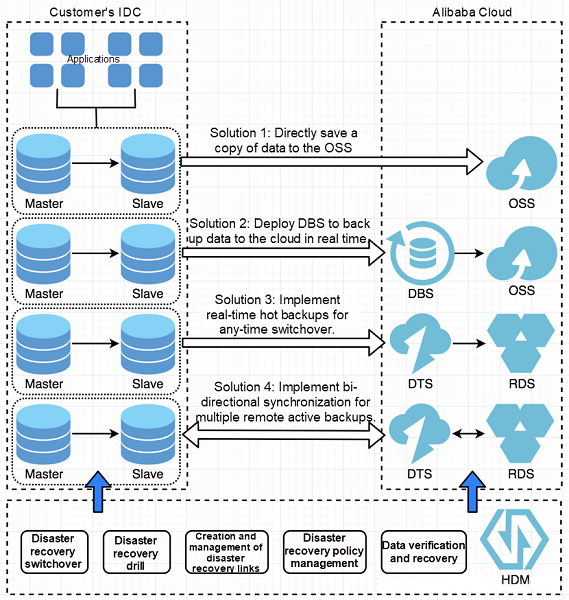
After multiple rounds of iteration, the outstanding disaster recovery capabilities of Alibaba Cloud products have been well proved. The following core products can help enterprises to develop database disaster recovery solutions for different scenarios or requirements:
In the disaster recovery scenario, we recommend that you use HDM in conjunction with other Alibaba Cloud products, such as DRDS and OSS. These products have undergone both internal and external Alibaba Cloud verification and turned out to be highly reliable. With these products, you can benefit from high flexibility in the disaster recovery scenario.
If you need data backup, for example, if you need continuous real-time backup that does not affect business operations, you can purchase Database Backup Service to implement hot backups of your databases. This service supports real-time incremental backups and data recovery within seconds. The following figure shows the architecture of the solution:
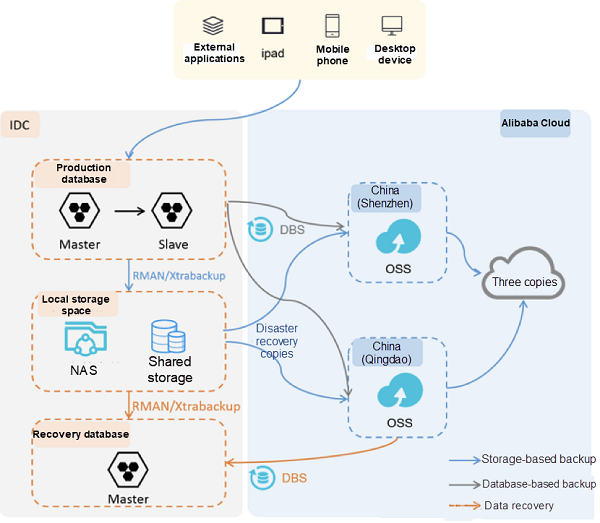
The design of the architecture is described as follows:
You can find all the following solutions in the enterprise-class database disaster recovery system: on-cloud elastic disaster tolerance, dual or multiple active backups, and three centers in two locations. The following example describes a solution using multiple remote active backups. This solution supports data-level remote dual active backups and one-click switchover to another data center for flexible scale-up or scale-down and future linear expansion.
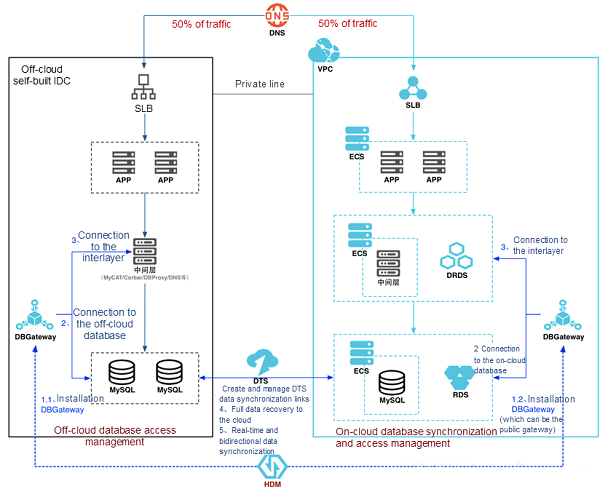
Deployment architecture
As an on-cloud database backup agent, Database Backup Service is used with OSS to create a cloud database backup solution. This solution takes only five minutes to implement real-time backups with a second-level RPO (which indicates the maximum duration allowed for data loss when the database fails, with a smaller value desired).
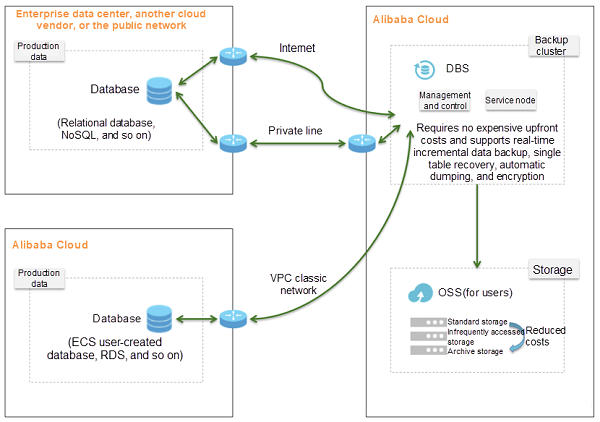
When Database Backup Service is deployed, the entire backup process is opened up and does not block any service requests to databases. With this service, you can choose to back up either the entire instance or a single table. When a misoperation is detected, you can use Database Backup Service to restore data to the copy from any point in time. In this way, the data of the entire instance or the specified table can be restored to the state up to one second before the misoperation. In addition, Database Backup Service is available in multiple specifications, meeting the backup requirements of databases whose sizes range from hundreds of MBs to hundreds of GBs.
At present, the backup system provided by Database Backup Service has been proven by massive numbers of users. Database Backup Service not only supports real-time backups and second-level RPO but also offers a table-level recovery capability. This helps users to restore only valuable data, decreasing the RTO to minutes.
It is worth mentioning that real-time backup has been tested during Double Eleven over several years. Database Backup Service will also provide the online query function. By using this function, after a data backup task is completed, you can run SQL statements to instantly query the backup data. Also, you can export the query results into Excel or Word files for further analysis or generate Insert and Replace statements to correct the data.
To learn more about Alibaba Cloud Database Backup Service, visit https://www.alibabacloud.com/products/database-backup
How Does Taobao Implement Real-Time Product Selection with Real-Time Computing?

2,593 posts | 776 followers
FollowAlibaba Clouder - November 12, 2018
Alibaba Clouder - July 22, 2020
Alibaba Clouder - July 7, 2020
Alibaba Clouder - January 10, 2018
stargazing - June 6, 2023
Alibaba Clouder - November 7, 2018

2,593 posts | 776 followers
FollowLearn More
 Data Transmission Service
Data Transmission Service
Supports data migration and data synchronization between data engines, such as relational database, NoSQL and OLAP
Learn More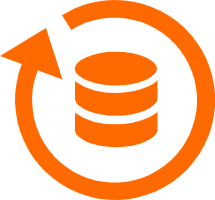 Database Backup
Database Backup
A reliable, cost-efficient backup service for continuous data protection.
Learn MoreMore Posts by Alibaba Clouder
Start building with 50+ products and up to 12 months usage for Elastic Compute Service
Get Started for Free Get Started for Free